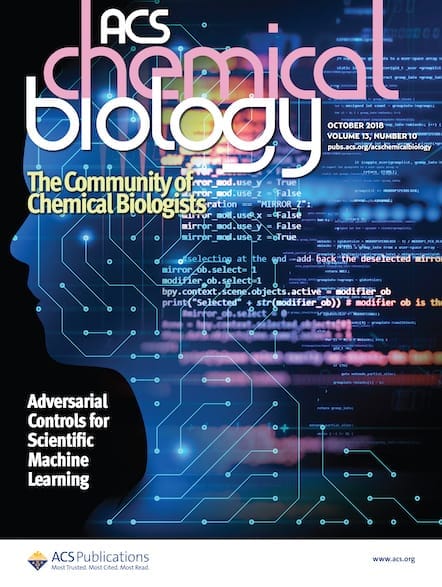Glioblastoma—a type of aggressive, invasive brain tumor—is almost always fatal. Although treatments exist, there is no cure. Now, researchers have taken a fresh look at a drug used to treat glioblastoma, temozolomide, and made it a better cancer killer with fewer side effects. For a long time, the standard of care for glioblastoma treatment was […]

Glioblastoma—a type of aggressive, invasive brain tumor—is almost always fatal. Although treatments exist, there is no cure. Now, researchers have taken a fresh look at a drug used to treat glioblastoma, temozolomide, and made it a better cancer killer with fewer side effects.
For a long time, the standard of care for glioblastoma treatment was radiation and surgery, which extended patient survival for an average of 12 months, says Paul J. Hergenrother of the University of Illinois, Urbana–Champaign. Since 1999, doctors have also given patients temozolomide, which enhances survival a little.
When temozolomide is activated by water it can add methyl groups to DNA, causing enough genetic damage to kill cells. However, the reaction isn’t specific to tumor cells, so the drug can lead to hefty side effects, especially since only 17% of temozolomide makes it to the brain. The problem is the blood-brain barrier, biological membranes that restrict unwanted substances from infiltrating the brain. Hergenrother’s team wanted to see if they could tweak temozolomide’s structure to help it pass into the brain without compromising its anticancer properties.
“When we started thinking about the chemistry and mechanism of temozolomide, we became curious about why some features of the molecule were there,” Hergenrother says. The team homed in on the molecule’s amide group, which has a large electric dipole—a property that is typically unhelpful in getting drugs through membranes. The synthesis of temozolomide was developed decades ago, and at that time the reaction sequence required a stable precursor that included this amide group, he says. By using modern synthetic chemistry methods, Hergenrother’s team could make the compound with an alternative group in place of the amide, to help the drug pass more easily through the blood-brain barrier while retaining its effectiveness.
To that end, the team systematically swapped out the amide for a series of chemical groups hypothesized to improve brain penetrance and then tested the compounds, first in cancer cells and then in mice. The best performing compound in mice, K-TMZ, contained a methyl ketone instead of the troublesome amide group. K-TMZ showed greatly increased brain permeability, with 69% entering the central nervous system compared with just 8% for temozolomide. In a mouse model of glioblastoma, K-TMZ treatment increased survival indefinitely. The researchers say that they now plan to test the compound in dogs with glioblastoma.
“The work is a tour-de-force of how these medicinal chemical problems need to be addressed,” says Shahriar Mobashery of the University of Notre Dame. He was particularly impressed by the researchers’ “clever chemistry.”
